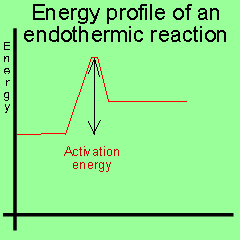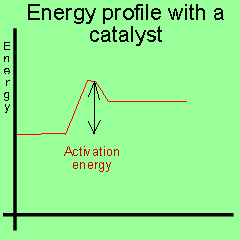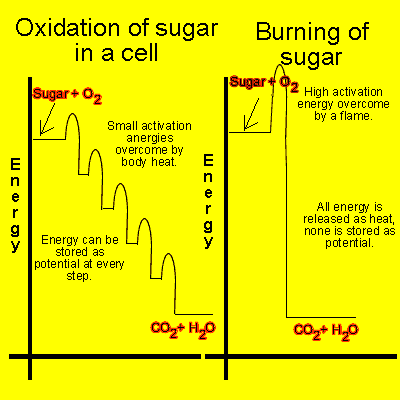Solution
A catalyst acts to decrease the activation energy of a reaction. Less energy is required to get the reactant molecules to collide with enough force as to break bonds.
As seen by the energy
profiles below less activation energy is needed.
 |
 |
Enzymes are organic catalysts.
They increase the rate at which a reaction proceeds by decreasing the activation
energy. Both enzymes and inorganic catalysts are not used up during the
reaction.
Enzymes are proteins with very specific shapes. The shape of the protein
is specific to the shape of the reactants. The reactants are held in a certain
orientations by the enzyme which makes it easy for moleucles colliding at
low speeds to break bonds. Inorganic catalysts have high surface energy
which causes the intramolecular bonds to break when reactant molecules land
on their surface.
Click to hide the solution
